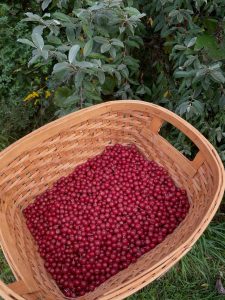Page Created by Connecticut Foraging Club
Upcoming Events | Meet the Instructors | Plant Archive | Mushroom Archive
----------------
Upcoming Events | Meet the Instructors | Plant Archive | Mushroom Archive
----------------
Stinging nettle (Urtica dioica) is a highly nutritious plant that can be found throughout the continental United States.

There are multiple subspecies of stinging nettle. American stinging nettle (Urtica dioica subsp. gracilis) is native to North America.

Stinging nettle has opposite, heart-shaped leaves with toothed margins. The plant produces small gray-green flowers that dangle like earrings. The square stems and leaves are covered with hairs that inject histamine and other chemicals into skin when touched. These chemicals cause a burning sensation.

Stinging nettles can be found in moist, rich soil in sun or dappled shade. They grow in patches or colonies. Nettles are spread by both seed and underground rhizomes. The plant is a perennial so can be found in the same spot year after year.
When harvesting stinging nettles, use gardening gloves and scissors to snip the top 4-6 inches from plants before they flower. Once the plant flowers, leaves become bitter. Stinging nettles can be foraged in the spring and then again in late fall if the plant has been cut.

Stinging nettle has an oceanic flavor. It can be used similarly to spinach after blanching for 60 seconds. Heat will dissolve the stings. Stinging nettle is great in soup, pesto, and quiches.
Stinging nettle is highly nutritious. It is rich in magnesium and calcium. It also has more protein than any other vegetable. The plant has been used to treat arthritis, skin conditions, and UTI’s. It can be used to reduce allergy symptoms and treat urinary difficulties from Benign Prostatic Hyperplasia.

Stinging nettle can be sustainably foraged by snipping off the top 4-6 inches. This will encourage new growth.
--
Written by Amy Demers, founder of the Connecticut Foraging Club. To learn more about foraging in Connecticut, check out our upcoming classes.






